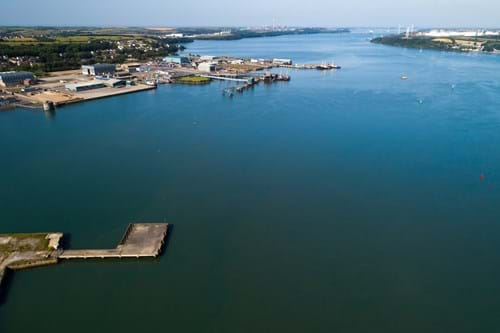Homes as Power Stations and Pembroke Dock Marine are two of many projects due to be part-funded by the £1.3 billion Swansea Bay City Deal in South West Wales.
The projects will follow on from the recent United Nations report warning of significant damage to seas and the world’s coastal communities if greenhouse gas emissions stay unchecked.
Launched in late September was the first phase of META (Marine Energy Test Area) in Pembrokeshire, which forms part of the Pembroke Dock Marine project that will boost Wales’ blue economy.
With eight pre-consented sites in and around the Milford Haven Waterway, the META project – led by Marine Energy Wales - aims to help developers deploy, develop and de-risk their marine energy technologies.
Phase one is made up of five sites adjacent to Pembroke Port, offering ease of access for device testing.
The £1.9 million project is being supported by the European Regional Development Fund through the Welsh Government, alongside the Coastal Communities Fund.

Cllr Rob Stewart, Chairman of the Swansea Bay City Deal’s Joint Committee, said: “Reflecting the concerns of the United Nations and other bodies, the Welsh Government has set a net-zero carbon emission target by 2050.
“So in the Swansea Bay City Region, we’re determined to lead the way through a series of innovative projects – some of which are due to be part funded by the Swansea Bay City Deal.
“These projects include Homes as Power Stations, led by Neath Port Talbot Council, which will feature 3,500 new home builds and the retro-fitting of 7,500 homes across the City Region to help tackle fuel poverty, meet our climate change obligations and benefit regional supply chain businesses.
“And now open for business, the first phase of the Marine Energy Test Area on the Milford Haven Waterway is one aspect of a broader Pembroke Dock Marine project that will also include the Pembrokeshire Demonstration Zone, improvements to Pembroke Port and a Marine Energy Engineering Centre of Excellence.”
David Jones, Project Director at Marine Energy Wales, said: “Marine energy is continuing to deliver new low carbon innovative jobs, while providing supply chain diversification, clustering and coastal economic resilience. It is also driving international inward investment and providing the region with exportable knowledge and skills.
“META will add to Wales’ marine energy capability and provide test areas to advance marine energy technology, support innovation and research, and play a critical role in the UK Catapult plans to support the sector in Wales.
“As the urgency to mitigate climate change grows, it is positive see the support across the City Region to deliver Pembroke Dock Marine.”
Neath Port Talbot Council will also soon submit a remodelled Swansea Bay City Deal business case for approval, which focusses on innovation, zero-carbon fuel and the future of steel.
Building on the council’s decarbonisation and renewable energy strategy, schemes forming part of the business case include zero-carbon fuel for council vehicles, an energy positive Swansea Bay Technology Centre, an electric vehicle charging route map, and air quality modelling.
A National Steel Innovation Centre will also be established, where research and development will be anchored into steel-making across the region to further reduce carbon emissions.
Cllr Stewart said: “These projects and others will soon be considered by the City Deal’s Joint Committee before submission to the UK Government and Welsh Government for approval.
“This will build on the approval of the first two City Deal projects – Yr Egin in Carmarthen and the Swansea City and Waterfront Digital District – with several regional councils also having declared climate change emergencies in recent months.
“And although it’s not due to be City Deal funded, we soon expect a positive announcement on the next steps for the Swansea Bay tidal lagoon.”
Revised lagoon proposals, which would form part of a Dragon Energy Island scheme off the coast of Swansea, include underwater turbines to generate zero-carbon energy, as well as a floating community of thousands of homes, a floating solar farm and an underwater data centre for technology companies to keep servers cool.
